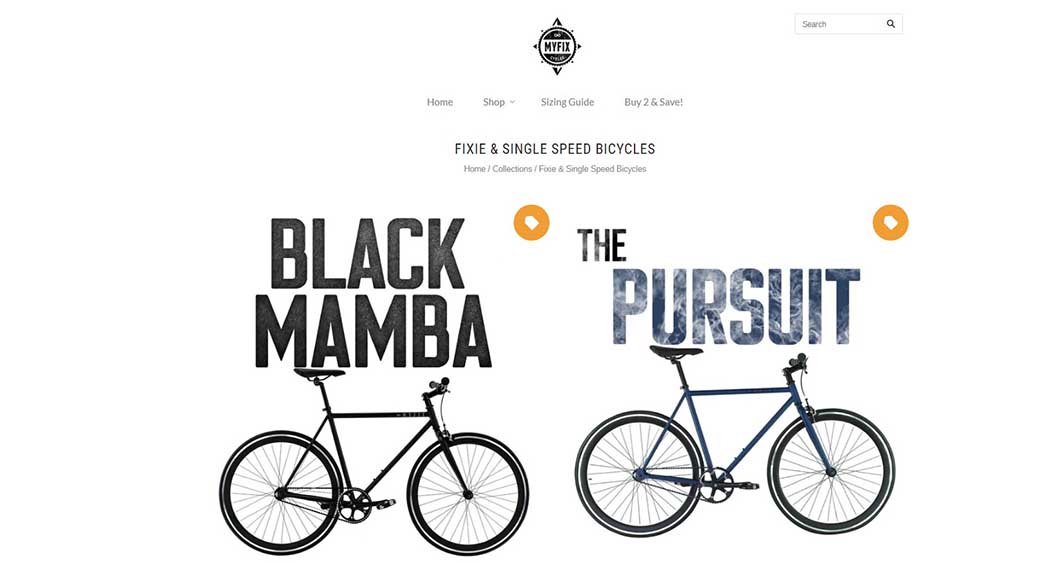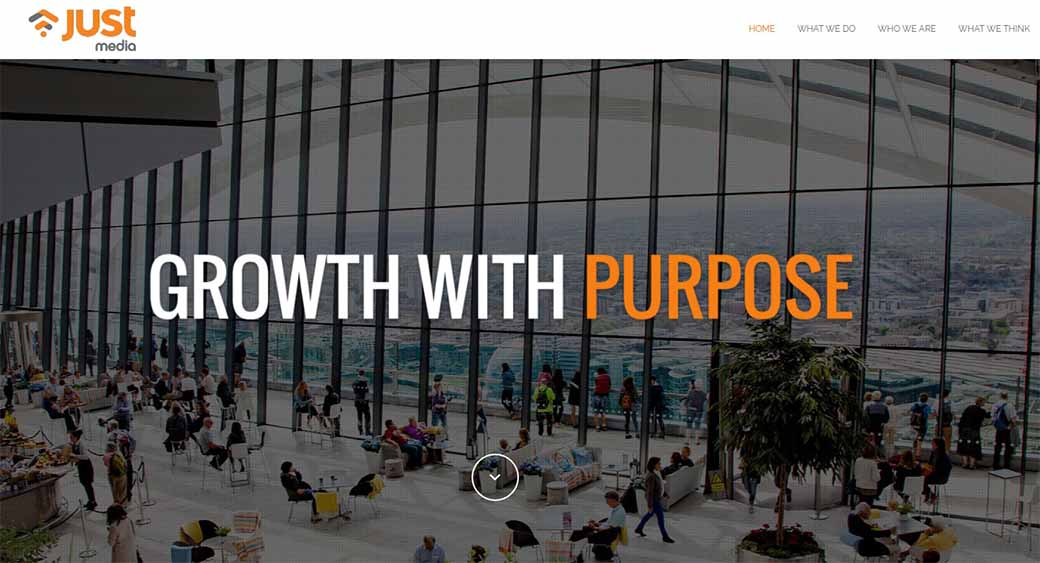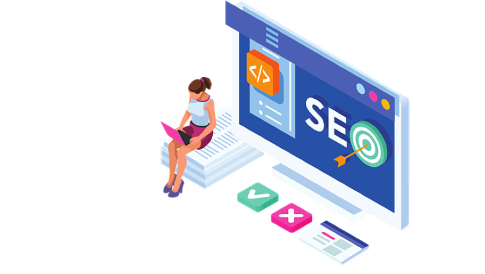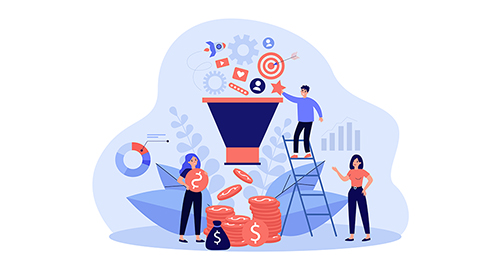Retargeting Statistics to Make You Launch Retargeting Campaign
If you want to master your digital marketing campaigns and drive more sales, retargeting is the way to go. It acts as a magic wand that selectively targets and re-engages your past visitors and potentially new customers based on their online activities. Retargeting lets you reconnect with those who just visited or browsed your website, watched videos about your products, signed up for your email, etc. The list goes on and on. Thanks to retargeting, your chances of making a sale are endless. Yet, when working on your campaigns, you should take retargeting statistics into account as well. The following data points will help you figure out how to empower your campaigns and boost click-through and conversion rates.

Why Is Retargeting So Important?
Only 2% of people who visit your website end up making a purchase. Sad, right? On average, shoppers visit different websites two to four times before actually buying something.
Do not let this discourage you. Retargeting can help you appear in front of your past visitors as they browse the internet based on the information you already have about them. They clicked on your website only once, but retargeting has the power to place your services and products before them, and convince them to re-visit your site.
The more retargeting ads you have, it is more likely that you will convert visitors into customers. Three out of four people notice retargeting ads. In other words, 70% of online shoppers are likely to convert on your site, thanks to retargeting. That is why retargeting is so important.

Retargeting/Remarketing and Retargeting Statistics
There is a single letter differentiating these two, and a whole dimension in-between. Each time visitors enter your website and start browsing, it sends cookies to their computers. Those cookies give you an insight into their actions on the internet after they leave your website. From that moment on, you can “retarget” them with ads popping up on other sites they visit about the products they have already shown interest in on your website.

Remarketing shares goals with retargeting, but focuses on email campaigns mainly to re-engage with cart abandoners or customers who added items to their wish lists. A great thing about it is that it focuses on potential customers who expressed interest in your products. The site owner can also focus on adding Upsells for retargeting of existing customers. These tools need not be pricier, these ThriveCart or Samcart like tools can help you with retargeting.
Retargeting, on the other hand, uses retargeting pixels. A pixel is an invisible code snippet. It places a cookie into the visitor’s browser and saves information to your Twitter, Facebook, and Google accounts.

The thing about retargeting is that it shows your ads specifically to those who have already visited your website, so you do not appear as a stranger. Yet, even if you are retargeting your competitors’ audiences, your products will still look familiar. According to retargeting statistics, this type of ads increases your CTR by 10 times.
When To Use Each?
The difference between retargeting and remarketing is more than obvious, but how do you know how and when to use each tactic effectively? Both of them aim for the same goal—to make those who were interested in your products or are likely to convert, convert for real.
If you are trying to send a clear message, remarketing may be the way to go. With retargeting, you have a limited space where you can place your content or ads. Remarketing is an ideal option when you want to remind your visitors of what they have left behind but also include a special offer.
Retargeting, the newest, yet the most significant subset of remarketing, is way better if you aim to reach a wider range of customers. It covers both past visitors and new audiences, similar to your existing customers, based on the actions they took while browsing.

10 Key Retargeting Statistics – Editor’s Choice
- Retargeting increases conversion rates up to 150%.
- The two most popular retargeting platforms are Google and Facebook.
- Retargeting ads are 76% more likely to get clicks than regular ad campaigns.
- Retargeting covers 98% of visitors who did not follow through with the desired action.
- The average retargeting click-through rates are 10 times higher than of display ads.
- According to 46% of SEM professionals, retargeting is the most undervalued marketing strategy.
- As a placement strategy, retargeting generates a high lift of 1,046% in business name searches.
- 70% marketers, mostly B2B and B2C brands, use retargeting to increase brand awareness.
- 30% of consumers are positive about retargeting ads, 59% have a neutral reaction, while only 11% react negatively to them.
- 27% of retail, 17% of tech, 10% of healthcare, 9% of finance, 8% of education, 5% of travel, and 4% of agency websites use retargeting.
You must admit some of these facts are simply fascinating. Did you have any idea how powerful this marketing tool actually is?
Now, if these numbers sparked your interest, let’s dive deeper into retargeting. We are going to explain how retargeting helps marketers and brands, list a couple of case studies, and back up our claims with more mind-blowing data.
Ecommerce and Cart Abandoners in Retargeting Statistics
The global average cart abandonment rate per device is 77.24%. 27% of the retail industry uses retargeting (especially mobile retargeting) to reduce the rate of cart abandoners. Retargeting can reduce cart abandonment by 6.5%, and increase online sales by almost 20%.

The main reasons abandoners quit sales so early are:
- High price.
- Not enough payment options.
- No free shipping/shipping costs.
- Low-performing website.
- Too much information needed.
- Complex checkout.
From 2005 to 2009, the average cart abandonment rate, according to IBM’s retargeting statistics, was 61.59%. From 2009 to 2013, it increased to 63.81%, and now it is 77.24%. Something must be wrong since it has never been easier to shop online.
Do you have a retargeting campaign running? If you do not, here is why you should launch one ASAP. That applies to all industries, not just eCommerce and retail.

Traditional sales and marketing models generate interest but do not follow up. We are talking about 98% of people who abandon your site without making a purchase and never hear from you again.
Without re-establishing a connection, that 2% of shoppers will soon forget they have ever purchased anything from you. The other group will forget they even visited your website. Why would you let go of a chance to remind both categories that you have products they want? It is a shame not to take advantage of retargeting to optimize UX after your cart abandoners and customers leave.
Even though retargeting is in an infancy stage compared to other remarketing strategies, it still gives you a lot of reasons for optimism, especially when we take a closer look at the stats. According to reports, it can boost monthly recovery rates from 3% to 11% from one campaign only.
Retargeting Statistics in Different Types of Retargeting
Digital marketing experts throw around marketing buzzwords so much they tend to lose their meaning quickly. Despite all the benefits retargeting can bring, the overuse of this relatively new term interfered with its meaning as well.
Yet, you should hear a bit more about other powerful retargeting tools that will help you boost conversion rates. When we know it takes up to seven interactions for customers to convert, you really have to implement different types of retargeting to reach the goal.
Now, let’s check out some of the best retargeting tools.
1. Search Retargeting
The most popular retargeting tool, search retargeting, gives you a chance to figure out what users are searching for on search engines. Keywords or phrases relevant to your business can point out to those who have not interacted with your site yet, but would if they knew you existed.
Yet, when creating these campaigns, pay attention to the searchers’ intent. Sometimes, individuals on search engines do not want to be bombarded by banners. Online retargeting statistics show that 30% of customers have a positive experience with retargeting ads, 59% are neutral about them, while only 11% of consumers do not like them that much.
2. On-site Retargeting and Retargeting Statistics
Once searchers land on your site, you want to stay connected even after they leave your site. How do you do this? By following them around the internet and tagging them. It is a bit tricky to figure out which ones are tag-worthy, but you will figure this out with time.

On-site retargeting compensates for 15% of potentially lost traffic.
Include a special offer with 10% off for your new subscribers’ first order, and boost your conversion rate significantly with your on-site retargeting campaign.
3. SEO/SEM Retargeting
A bit underused, SEO/SEM retargeting is a no-brainer. It gives you an insight into the search terms your visitors clicked on before landing on your website. You can use it to refine and perfect your ads delivered to these types of visitors.
4. Email Retargeting
Email retargeting comes handy when you want to increase engagement and leverage subscriber data. One thing that is important to bear in mind is that not everyone is a potential customer from your retargeting list. Group your visitors according to those who open your emails, click on the links, forward your emails, or never open them at all.
It would be great to obtain information about people who unsubscribed from your list. That helps you exclude them from your retargeting campaigns.
In comparison to standard on-site retargeting, email stats say this brings 3% to 5% higher conversion and click-through rates.
5. Engagement Retargeting
Last but not least, engagement retargeting works exceptionally well with brands that offer high-quality videos or other types of rich media content. Marketers use engagement retargeting to increase conversions.
When it comes to statistics, this type brings a 70% increase in conversions. The holiday season is the best time to re-engage with your customers. Thus, holiday-focused retargeting campaigns generate an additional 30% of conversions.
Mobile Retargeting in Percentages of Retargeting Statistics
If you like numbers, these mobile stats will make it clear why you, as a marketer, should improve mobile campaigns. 30% of consumers who intend to make a purchase end up leaving the site. 85.56% of cart abandoners browse on their mobile phones. Consumers who browse through multiple devices start their search on a mobile device.

30% of US citizens use their mobile devices to find products or services. 71% of sales occur on mobile phones, while shoppers spend more when using their smartphone devices, especially if they order through apps. The situation is pretty much the same in North-East Asia. 80% of online shoppers purchase through mobile devices, while 60% of shoppers in Korea carry out cross-device transactions.

Knowing all this, would you miss a chance to connect with those shoppers again, boost engagement rates, and increase your conversions with mobile retargeting?
10 General Retargeting Statistics
- Online consumers who have already interacted with your website are three times more likely to click on retargeting ads than the ones who have not.
- Brands that use retargeting experience 726% lift in site visitation four weeks after placing their ads.
- 56% of brands use retargeting to acquire new customers, 42% to build brand awareness, and 11% to target and attract their competitors’ customers.
- One in five marketers set aside money for a retargeting campaign.
- 50% of marketers believe retargeting will help them increase their budgets significantly over the next six months.
- 41% of display marketing budgets were invested in retargeting back in 2018.
- 18.41% of the top one million sites use Facebook Custom Audiences as the most popular retargeting technology.
- 37% of online shoppers are drawn to click on a retargeting ad due to the product shown.
- A well-defined mobile retargeting strategy drives up to 48% more CPT.
- Once retargeted, mobile users who make a purchase on a certain website are 173% more likely to make another purchase on the same site in the future.
Why You Should Leverage Retargeting?
Performance-driven marketers are crazy over retargeting and retargeting statistics. The reason for this is because retargeting, as one of the most powerful tools, allows them to bid on and purchase individual ad impressions in real-time.
As a result, retargeting yields high levels of engagement at low campaign costs. What would you say if you knew retargeting ads typically cost 2 to 100 times less than search ads?
Measuring ROI is the most difficult social media marketing challenge for 60% of marketing professionals. Yet, with retargeting, calculating your ROI is a piece of cake.

Retargeting connects you with ready-to-convert audiences, which improves your conversion rates. Once your conversion rates become substantial, make sure to pay attention to the increase in ROI. Check this out:
Retargeting gets you that second chance to close a lead.
Sometimes you want to get a second chance to make a first impression. As the buyer’s journey is far from linear, you cannot count on your potential leads to find you and convert at the first attempt. And if you do, you will probably struggle to calculate and generate legitimate ROI.
Retargeting ads get 76% more chance to convert than ordinary ads. By focusing on users who have already interacted with your products or services, retargeting provides an opportunity to connect with them once more and likely hit a home run.
Retargeting does not limit your campaigns to PPC landing pages.
You can place pixels on whatever page you want, including organic product or service pages. When you want to build lists for target campaigns, retargeting can support your advertising budget and generate initial traffic to the tracked pages.
Once you generate lists of visitors who are almost ready to convert, you can increase your conversions without spending more money on ads. That is pure ROI logic.
Retargeting allows you to place tracking pixels on “Thank you” pages.
Considering high conversion rates (150%) retargeting brings, this gives you more sources to build your retargeting audience. Once you make that customer convert once, your goal is to expand that marketing relationship.

Additionally, if the conversion is the result of your remarketing campaign, you can increase the chances of that particular customer ordering from you again by 173%.
If you include up-sells and cross-sells to your retargeting campaign, that can help you generate double income. Add some more conversions to the existing ones and maximize your ROI.
Retargeting Statistics in Case Studies
Still not convinced retargeting works that well? In a nutshell, if you use your resources properly, your retargeting campaigns will skyrocket. For some, retargeting statistics mean nothing if explained without examples, and that is perfectly understandable.
The following case studies prove retargeting goes far beyond other targeting strategies. Take notes, as these tactics can bring massive success to those who apply them right.
Myfix Cycle and Webrunner Media Group
The collaboration between Myfix Cycles and Webrunner Media Group is a living proof retargeting does not have to involve expensive technology or huge budgets.
Myfix Cycle is a Canadian bicycle retailer who partnered with Webrunner to boost their business. They were struggling with their Google Ads for a while and decided to find a way to escape breaking even.

What did they do?
- Set up a Facebook pixel.
- Added conversion tracking to their website.
- Segmented their audiences (visitors in the past 14 days, card abandoners from the past 14 days, people who purchased from them in the past 3 months).
- Targeted the first two audiences through Custom Audiences.
- Excluded recent buyers.
- Included free shipping.
- Improved the aesthetic appeal of their ads.
The result? They generated an incredible 1,529% ROI. For each dollar spent, they earned $15.
Total Wine and ReTargeter
You do not have to guess what Total Wine is. With almost 200 stores across the US, the business is growing at a steady pace. In the beginning, Total Wine had an idea to build an eCommerce store. Considering that a long-term strategy was necessary to drive traffic and boost sales, ReTargeter came to assistance.
ReTargeter suggested investing in creative assets, focusing on CRM, and targeting cart abandoners. Long-term results Total Wine got:
- 50% increase in reach.
- 20.7% of revenue generated from retargeting.
- 6:1 lifetime return on ad spend.
ReTargeter was matching CRM email lists to those on Google Ads, AdRoll, and similar retargeting platforms. That helped create and segment unique audiences.
The best thing about CRM retargeting is that it provides long-term results, does not require pixels or cookies, and stores valuable data about user behavior.
Lumension and Just Media
Just like retargeting statistics we listed prove, it is not only the retail industry that uses retargeting to reach goals. Here we have B2B retargeting cooperation.
One of the global leaders in endpoint security software, Lumension, wanted to expand its potential regarding retargeting campaigns. Just Media, a marketing agency, made it possible.

Unusual results their collaboration brought:
- Even though they cut their PPC budget by 30%, the lead volume scaled to an amazing 81%.
- They experienced an increase of 10% in targeted influencer traffic.
If you have no idea what the targeted influencer traffic is, here comes the explanation. We did not know either, but Lumension and Just Media blew us away with their tactics.
They did not want all visitors to get the same message. To get results they were striving for, they used online and offline data.
First, they explored which offline events are Lumension’s target audience interested in. They named that approach “integrated retargeting.” Then, they used Google’s Customer Match feature to reference conference booth attendees to visit Lumension’s site afterward.
Just like we mentioned, 11% of brands use retargeting to target and attract their competitors’ customers. Lumension falls into the category of this 11%. It retargeted visitors who were interested in IT security and were browsing some of the competitors’ websites.
Thanks to this advanced campaign, Lumension increased its unique visits by 8% and homepage views by 835%.
Retargeting Statistics and Campaigns – Summary
A retargeting campaign will undoubtedly improve your marketing efforts. That type of campaign spreads the word about your products and services across numerous channels, boosts engagement rates, conversion rates, click-through rates, and ROI.
If you want to convert your visitors into customers, retargeting will take you there. Thus, do not forget to double-check retargeting statistics and best practice aspects we introduced. Individual digital marketing companies and marketers use this information when creating mind-blowing retargeting ads. You should do the same.




Leave a Reply